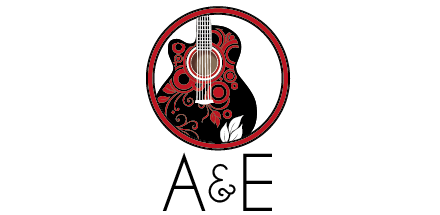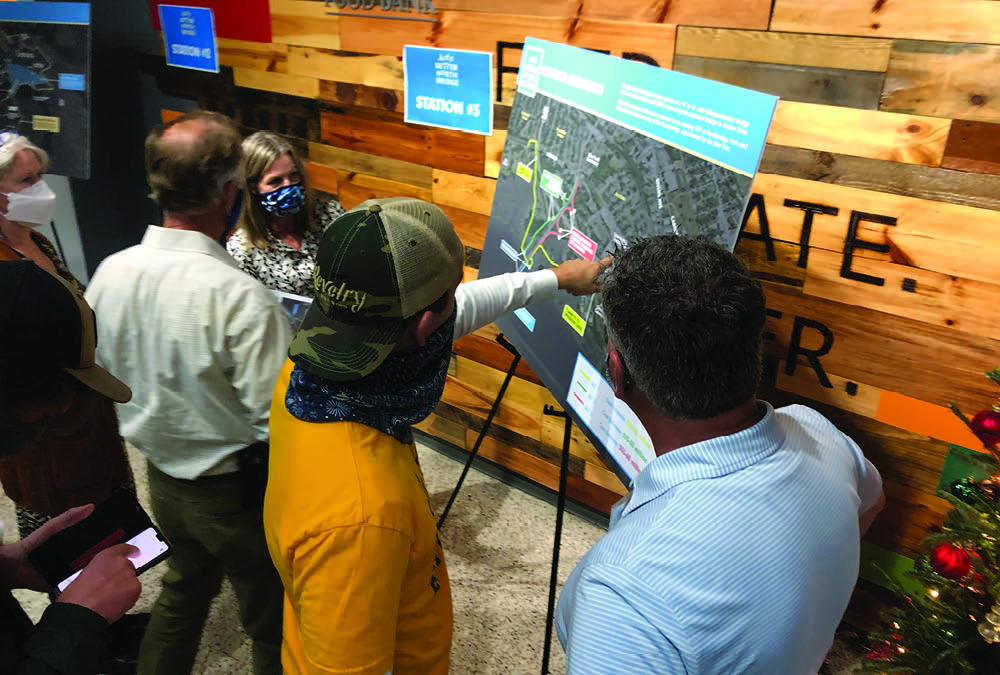County, City, citizens, and local advocacy groups are working together to improve West Ashley’s bike and pedestrian ways
by Bill Davis | News Editor
There is a fistful of transportation projects slated to get West Ashley’s traffic unclenched, that are unrelated to the Interstate 526 completion or a cloverleaf at Highway 17 and Main Road.
The first one is still in the pre-proposal stage, building an outrigger-style bike and pedestrian bridge alongside the Northbridge, like the one that will be built over the Ashley River into downtown from West Ashley.
“Pre-proposal” because the project has three possible paths once it hits the North Charleston side of the river. The costs for the three proposals run from $25-$60 million.
At issue is where traffic over the proposed bridge would head once it landed across the river.
Two of the plans would roughly have an extended bike/pedestrian path run on opposite sides of Cosgrove Avenue directly into adjoining neighborhoods after crossing the onramps for I-26.
One of those plans includes the use of an elevator to move cyclists and walkers, which has been quietly panned by many of the officials and stakeholders involved with the project
The third plan would split the path, with one heading left up toward Harvey Street, and the other heading right and along Azalea Road toward a future county park and the beginning of Charleston’s “Greenline” bike/ped path, and other amenities.
Once the decision is made between the city, the county, and North Charleston, the most important issue can be addressed: money.
So far there is no funding source identified for the plan, but officials and stakeholders, like Katie Zimmerman of local bike/ped advocates Charleston Moves, hope that some will be found from federal grants as well as in the recently-passed federal infrastructure bill.
Charleston County Councilman Brantley Moody, who represents the West Ashley side of the bridge, is pushing for the side bridge as a great source of “recreation” for locals.
Moody loves the idea of people using the side bridge in the future in the way like the bike and walking lane on the Cooper River Bridge currently is.
He calls the third option’s right turn a “no-brainer” as it would tie into so many other future amenities.
City Councilman Peter Shahid, whose district overlaps with Moody’s, attended a public discussion of the three plans and sees an opportunity beyond transportation. Shahid likes the idea of walkers and bikers being able to enjoy the vista of the river at a more leisurely pace.
Charleston Moves head honcho Katie Zimmerman believes the proposal could fix an unintended wrong of the bridge’s history.
In the 1950s, the bridge had two lanes and a wide sidewalk. In the 1970s it was widened to handle the increased traffic brought on by a bustling naval base.
But, Zimmerman says, that widening included the removal of the sidewalk, isolating walkers, and bicycle riders in North Charleston.
Fast forward, and economic conditions on the other side of the bridge worsened, and grocery stores closed over there, a food desert began to grow. This forced some without a car to brave the bridge on foot or on a bike with cars whizzing by.
Sheila Parker, the lead construction project manager for the county says safety is the most important issue.
“There have been several fatalities on the bridge in the last few years,” says Parker. “We see that people are dying. Even the drivers in vehicles get scared they don’t want to hit anybody, trying to provide safer alternatives for walkers and bikers.”
City Councilman Keith Waring knows that feeling of dread.
“I’ve seen it at night, and it scares me to death,” says Waring. “Someone, walking or biking at the apex of the hill or just on the downside of the bridge where they’re not expected to be, dodging cars or the reflective bollards that run down the middle of the bridge.”
A second open public meeting will be held Wednesday, Jan. 12th, from 4-7 p.m. at Westminster Presbyterian Church, 1157 Sam Rittenberg Boulevard. An online option will also be available through www.betternorthbridge.com.
While it might seem to some as a bit “pie in the sky” to talk about a transportation project for which there is no funding, they should remember that plans for the Ashley River bike/ped bridge was all talk until 2019, when Moody helped secure money from the county.
And construction on that bridge could begin as early as next year, according to a timeline put out by the city.
An equally vexing transportation problem—the “suicide merge” a few blocks short of the Northbridge where Old Towne Road and Sam Rittenberg Boulevard intersect—is closer to getting fixed.
According to a timeline published on a county website, construction could begin there in the second third of 2022, and will take a year to complete depending on funding. That project’s road improvements also includes enhanced pedestrian and cyclist access and safety.
On a related note, cyclists and walkers are now able to take a respite along the West Ashley Bikeway near Mulberry Street. Two bridge-pavilion projects have been erected there overlooking water features.
Both include covered areas and were built and designed by Clemson architecture students studying in Charleston. Last winter, the group, led by senior lecturer David Pastre, erected a stainless-steel bridge linking the bikeway and the W.L. Stephens Aquatic Center on Playground Road.
The latter two projects were constructed along with the city, the Charleston Parks Conservancy, a local charitable fund, and are a precursor of a future park to be erected there, according to both Pastre and Councilman Waring, who represents the surrounding Ardmore neighborhood.
Pastre says an impressive array of birds already call the water features home, including herons, egrets, and Canada Geese. “It’s like ‘Jurassic Park,’ in that you’re surrounded by the squawks of all these different large birds in that area,” he says.
Waring says Pastre’s shelters can host family reunions, and when playground equipment is installed, it’ll be open for all ages. The city and the conservancy have partnered together to rebuild both the bikeway and the West Ashley Greenway into connected urban linear parks.
Pastre hopes that the projects will improve that end of the bikeway in much the same way the Higgins Pier has improved its other end on the Ashley River. Which, by the way, is a great place to walk or bike out to.














